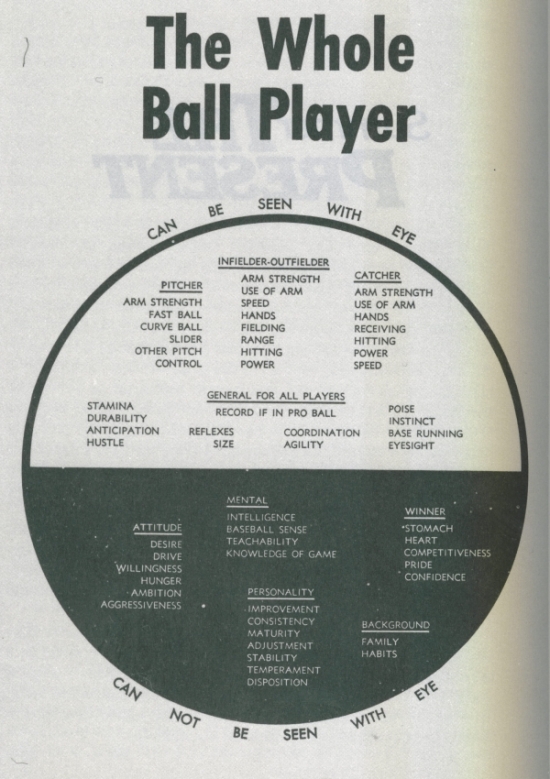I wish I was smart enough to have sold mine for $141. I read some stories in the SABR newletter about this (cult) classic baseball book selling for $89-$99 bucks a pop. I waited until the price was down to $39.99 before I put my original copy for sale on Amazon.com. Oh well, it's only money....c'est la vie.
from Baseball Prospectus:
Baseball Prospectus | BP Unfiltered: The Whole Ball Player:
"A new paperback copy of Kevin Kerrane’s Dollar Sign on the Muscle: The World of Baseball Scouting costs $141.12 on Amazon. A new hardcover copy will run you $284.94. That’s a shame, since it’s worth reading. Not many people have upwards of $100 to drop on a baseball book, especially after buying copies of BP2012 and Extra Innings for all of their friends, family members, and co-workers.*"
*In 2008, I bought one online for $5. If I'd known the market for books about scouting from the 1980s was about to explode, I would have stockpiled many more. Bad scouting by me.
The book includes a chart devised by Jim McLaughlin, the first scouting director of the Orioles, who later held the same position with the Reds. You know that scene in Moneyball where Billy Beane gets fed up with the stereotypical scouts who are telling him how each player’s face and girlfriend look instead of what he wants to know? McLaughlin was Billy Beane in that scene, 50 years before Billy Beane was. McLaughlin rarely left the office to see players in person. Instead, he concentrated on making scouting a more scientific process: in his own words, he “scouted scouts.” According to Kerrane:
...he brought baseball scouting into the modern era by exercising rigorous bureaucratic control. He began employing cross-checkers in 1955, ten years before the draft, to provide multiple, layered views of top prospects. He reorganized scouting territories for more extensive fishing where the fish were biting. He held scouting seminars, staged mock signings, and barraged his staff with memos on the difference between skills and talents, or between performance and tools. And when possible, he got rid of the old-fashioned individualists.
Alex Belth wrote more about McLaughlin here. Basically, he’s the patron saint of scouting for anyone who believes in an objective approach to baseball. As part of his efforts to make scouts more efficient, McLaughlin created a chart to capture all the qualities of a player, separating them into tangibles and intangibles. This is that chart. You can tell it’s old, because when McLaughlin created it, people still hadn’t discovered that they could save themselves some time by making “Ball Player” one word. (Click to expand.)

No comments:
Post a Comment